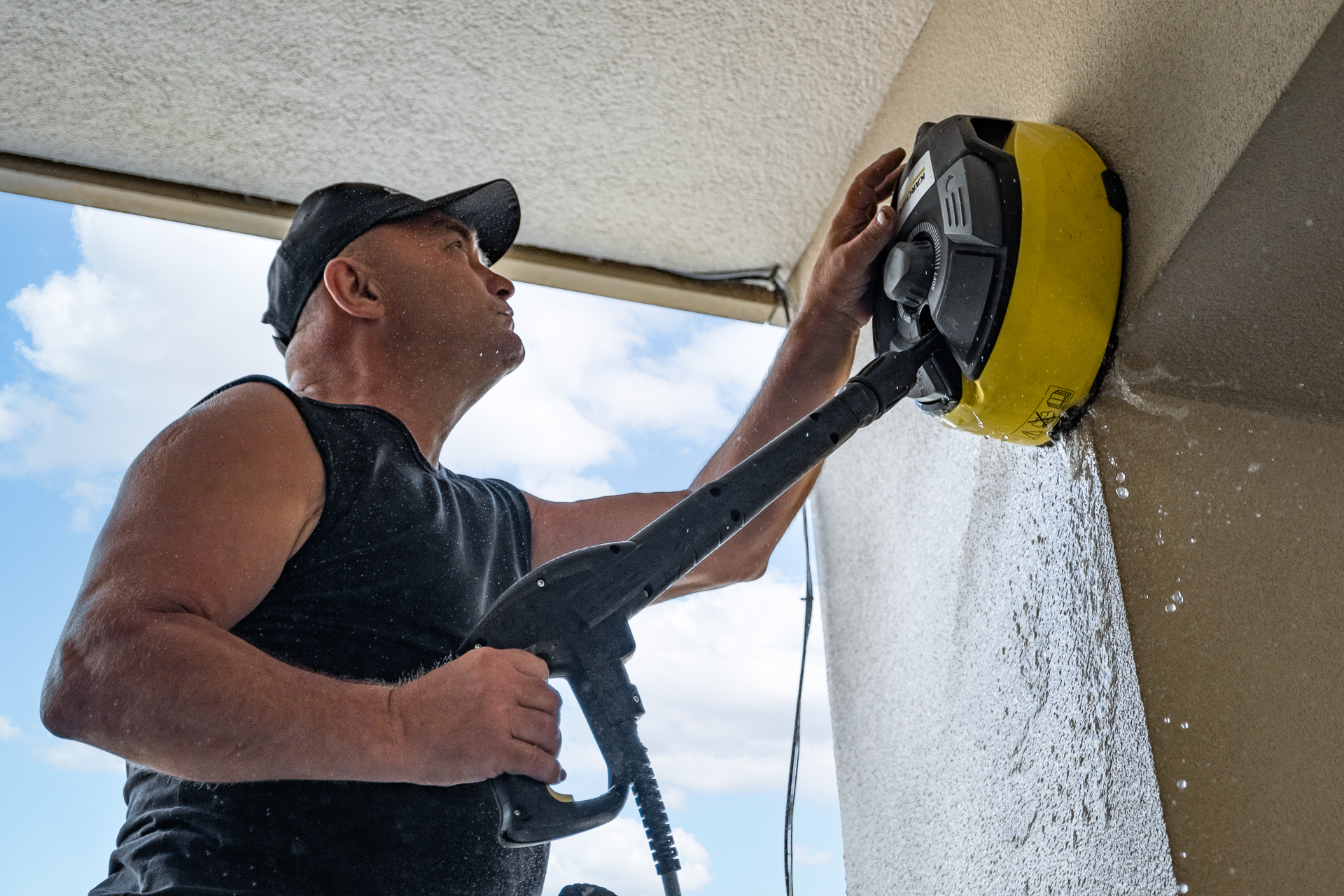
If it’s been a few years since your property was first built or last renovated and its presentable appearance seems to have faded away, worry not – this doesn’t imply another coat of paint. Try the good alternative – pressure wash your facade. You may find that all you need to do is choose the right cleaning method and the facade will look brand new with no need to repaint the whole building. Find out what you need to know to effectively clean your facade.
How to choose the right cleaning method for your facade
As in many cases, the methods of facade cleaning depend on the type of dirt – the most common include efflorescence, scale and algae. Consider the surface material as well. To avoid damage to the structure, it is critical to choose the right water flow and pressure for the type of plaster. Pressure cleaning of facades is effective on mineral, silicate and acrylic plasters and even on brick facades.
Types of plaster vs pressure washing
Water alone is enough to clean delicate mineral plasters, just as it is for stone and clinker facades. With the right pressure, even clean water can significantly improve the visual appeal of exterior surfaces. For more difficult dirt, you can try using a higher water temperature or choosing the right chemicals.
In turn, when pressure washing acrylic facades, we recommend using fungicides and mildewcides – because algae, fungi and mold most often thrive on this type of surface. Once cleaned with a chemical agent, rinse the facade once more with clean water. However, if uninvited guests have already shown up on your facade, extra measures are necessary.
Removing algae from facades
Algae is a common type of dirt to appear on plaster over time. North-facing, shaded walls are particularly susceptible. To get rid of algae, you first need to remove the visible layer from the facade – you can do it either mechanically, with a brush or spatula, or you can use pressure cleaning and wash away the deposit with a stream of water. When using the – apparently easier – method of pressure washing the facade, pay attention to adjust the stream to the plaster, so that the cavities are not damaged by too high a pressure.
After the facade is dry, the walls should be treated with a disinfectant, ensuring that any remaining spores are removed in the next stage of the cleaning process and preventing the rapid recurrence of the problem. For better protection against the recurrence of algae you can also consider painting or protecting the walls with a water repellent treatment that prevents water from penetrating the material structure.
Cleaning facades from efflorescence and carbon deposits
Efflorescence usually appears as white stains on brick and clinker. To remove them, it is best to treat them with an adequate chemical cleaning agent. As salt efflorescence is caused by excessive moisture, after cleaning the surface, we recommend impregnating it immediately to avoid recurrence of the problem. Water repellent treatment will also work well in this case.
Carbon deposits may also appear on the brick facades; these are black-colored stains forming for many years as a result of e.g. dust, exhaust fumes and soot. To get rid of this rather unsightly layer, it is often necessary to use a variety of methods: apart from the standard pressure cleaning, low-pressure sandblasting may be necessary to support the process of removal of permanent stains.
How often to clean the facade?
You can keep your facade in good condition by cleaning it regularly – ideally once every 2-3 years. Mineral plasters require relatively more frequent cleaning as they collect more dirt due to high water absorption; so do plasters with rough texture – e.g. knockdown plaster, which retain more dust and dirt. Plasters with low water absorption and smooth surface such as silicone, silicate and acrylic plasters will require less frequent maintenance.
Pressure washer for facade cleaning
Most facade dirt is easily removed by pressure washing (with water or chemicals), so how do you choose an effective pressure washer? Consider:
- Lance length – a telescopic lance, allowing for length adjustment, works particularly well for even washing;
- Washer power – preferably adjustable so that you can adjust it to the type of facade to be cleaned
- Detergent tank – if you plan to use chemical agents for cleaning;
- Other accessories – to support e.g. window or gutter cleaning.
If you wish to make each of your walls look so perfectly washed, but you lack the time or willingness to ponder over the choice of the right equipment and resources, then leave it to the professionals. By commissioning the specialist facade pressure cleaning, you won’t worry about damage to the plaster, but instead will soon enjoy the renewed look of your building.






